Phổ biến trong ngành của bạn
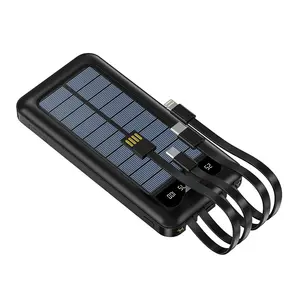
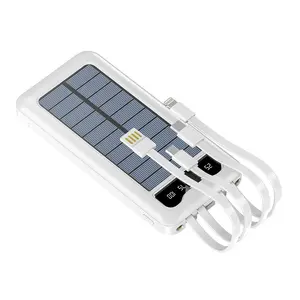

10000mAh ngân hàng điện cầm tay với xây dựng trong cáp và chủ ngân hàng điện năng lượng mặt trời
16,94 ₪ - 18,47 ₪
Đơn hàng tối thiểu: 2 Cái







Pd 22.5W từ Powerbank từ ngân hàng điện không dây từ ngân hàng điện mini10000mah ngân hàng điện

27,77 ₪ - 31,10 ₪
Đơn hàng tối thiểu: 200 Cái







Biểu Tượng Tùy Chỉnh Từ Ngân Hàng Điện Không Dây 5000MAh 10000MAh Nam Châm Sạc Không Dây Powerbank Cho Iphone 12 13 14 Pro Max
Sẵn sàng vận chuyển
27,55 ₪ - 27,66 ₪
Đơn hàng tối thiểu: 5 Cái




Pin Sạc Dự Phòng BAVIN 40000 Mah Pin Sạc Nhanh Dung Lượng Lớn Chính Hãng 40000 MAh Trạm Sạc Dự Phòng PC077 Pro
45,68 ₪ - 62,68 ₪
Đơn hàng tối thiểu: 10 Cái







OEM Logo m-nữ Hoàng Mag kim loại PowerBank 5000mAh Pin cho điện thoại di động Slim sạc nhanh mini không dây từ ngân hàng điện
22,39 ₪ - 25,46 ₪
Đơn hàng tối thiểu: 10 Cái







Sản Phẩm Hot Sạc Di Động 10000 Mah Powerbank Slim Portable External Ngân Hàng Điện
8,97 ₪ - 10,43 ₪
Đơn hàng tối thiểu: 5 Cái






2024 khuyến mãi tốt nhất quà tặng nhỏ xách tay ngân hàng điện 5000 mAh Mini PowerBank 5000 mAh powerbanks
7,44 ₪ - 19,07 ₪
Đơn hàng tối thiểu: 50 Cái

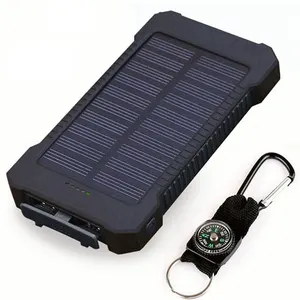

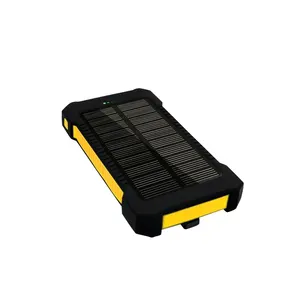


Pin Sạc Dự Phòng Năng Lượng Mặt Trời Hai Cổng USB Sạc Pin Chống Nước 20000MAh Pin Sạc Dự Phòng Di Động Tấm Pin Mặt Trời Có Đèn LED
18,51 ₪ - 20,56 ₪
Đơn hàng tối thiểu: 30 Cái






Khẩn cấp tpye C sạc điện thoại một thời gian sử dụng Powerbank 1000mAh IOS 1 xách tay dùng một lần ngân hàng điện
2,17 ₪ - 4,79 ₪
Đơn hàng tối thiểu: 49 Cái

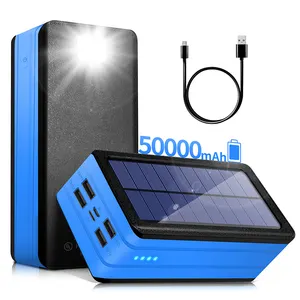




PSOOO Sạc Năng Lượng Mặt Trời Di Động 20000MAh 30000MAh 50000MAh Sạc Pin Năng Lượng Mặt Trời Chống Nước IP66
47,06 ₪ - 85,93 ₪
Đơn hàng tối thiểu: 2 Cái


Mini ngân hàng điện 5000mAh không dây từ Powerbank sạc di động cargador portatil cho cargador iPhone BATTERIE externe
4,86 ₪ - 10,84 ₪
Đơn hàng tối thiểu: 5 Cái






Qc PD sạc nhanh ngân hàng điện 10000mAh di động pin sạc 20000mAh 30000mAh 50000mAh powerbanks
19,44 ₪ - 23,55 ₪
Đơn hàng tối thiểu: 50 Cái
Các tìm kiếm liên quan:
cấp bằng sáng chế ngân hàng điện cầm tayvolpower ngân hàng điện cầm tayl năng lượng mặt trời ngân hàng điện cầm tay220 volt ngân hàng điện cầm tayđa chức năng ngân hàng điện cầm tayđường cao tốc ngân hàng điện cầm taydc 5v ngân hàng điện cầm taynăng lượng mặt trời túi ngân hàng điệnusb bên ngoài pin ngân hàng điệndự phòng pin trường hợp ngân hàng điện miningân hàng điện pin di động bên ngoàingoài trời pin ngân hàng điệnngân hàng điện nhàkép đầu ra ngân hàng điện cầm tayđôi usb đầu ra ngân hàng điện cầm tay






Nhà máy chất lượng cao từ ngân hàng điện không dây 10000mAh và 5000mAh công suất cao di động sạc nhanh sạc
7,48 ₪ - 20,56 ₪
Đơn hàng tối thiểu: 10 Cái






Chất Lượng Cao Ngân Hàng Điện Kích Thước Nhỏ Ngân Hàng Điện 2600Mah Powerbank Xách Tay 2600Mah External Battery Charger Ngân Hàng Điện Ngân Hàng
4,08 ₪ - 5,95 ₪
Đơn hàng tối thiểu: 20 Cái






Giày Sang Trọng Ngân Hàng Điện 8000MAh Chất Lượng Cao Sạc Pin Di Động Ngân Hàng Điện
24,30 ₪ - 29,90 ₪
Đơn hàng tối thiểu: 10 Cái






2023 thiết kế mới Keychain 1500 mAh Loại C khẩn cấp điện thoại di động nhỏ sạc di động mini ngân hàng điện
2,70 ₪ - 4,30 ₪
Đơn hàng tối thiểu: 50 Cái






Tùy Chỉnh Logo Trường Hợp Công Suất Cao 10000Mah Đúp Usb Di Động Pin Sạc Điện Thoại Di Động Thiết Kế Diy Powerbank Ngân Hàng Điện
12,71 ₪ - 15,66 ₪
Đơn hàng tối thiểu: 10 Cái
- 56%






Điện Thoại Di Động Ngân Hàng Điện 20000 MAh OEM Powerbank Sạc Di Động Pin Ngoài 20000 MAH Ngân Hàng Điện Quà Tặng
Sẵn sàng vận chuyển
8,23 ₪ - 13,16 ₪
Đơn hàng tối thiểu: 1 Cái
Vận chuyển mỗi chiếc: 97,18 ₪
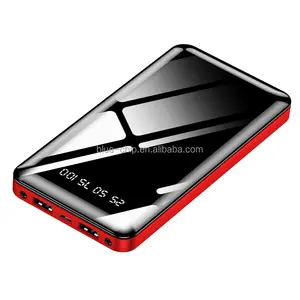





Sạc Dự Phòng Mini 20000Mah Mới Bán Tại Nhà Máy Sạc Dự Phòng Di Động Gương Sạc Dự Phòng 10000Mah
16,00 ₪ - 24,37 ₪
Đơn hàng tối thiểu: 20 Cái
- 25%






Xách tay công suất lớn 50000mAh Powerbank LED hiển thị kỹ thuật số 4USB Type-C đầu ra USB C PD 22.5 Wát ngân hàng điện 50000mAh sạc nhanh
Sẵn sàng vận chuyển
29,42 ₪ - 35,02 ₪
Đơn hàng tối thiểu: 5 Cái
Vận chuyển mỗi chiếc: 58,31 ₪






Sạc Dự Phòng Dùng Một Lần Sạc Điện Thoại Di Động Mini Một Lần 1000Mah Cho iPhone
4,79 ₪ - 4,86 ₪
Đơn hàng tối thiểu: 50 Cái






Nhanh chóng sạc nhanh 30000mAh ngân hàng điện điện thoại di động xách tay Powerbank 30000mAh sạc ngân hàng điện không dây
23,03 ₪ - 41,42 ₪
Đơn hàng tối thiểu: 20 Cái





Remax 20000mAh Powerbank carregador banco de tính di động pin sạc nhanh ngân hàng điện 20000mAh 10000mAh với 2 cáp
22,39 ₪ - 29,87 ₪
Đơn hàng tối thiểu: 10 Cái






2022 PZX C146 Tốt Nhất Quà Tặng Khuyến Mãi Nhỏ Ngân Hàng Điện Cầm Tay 10400 Mah Nhỏ Powerbank 10400 Mah Powerbanks
7,11 ₪ - 9,31 ₪
Đơn hàng tối thiểu: 2 Cái






Hàng Mới Về 2019 Ngân Hàng Điện Không Dây 10000Mah, Cung Cấp Điện Thoại Di Động, Pin Usb Di Động
18,65 ₪ - 22,39 ₪
Đơn hàng tối thiểu: 10 Cái






Nhà Máy Bán Xách Tay Powerbank Mini Ngân Hàng Điện 20000Mah
Sẵn sàng vận chuyển
0,5607 ₪ - 18,09 ₪
Đơn hàng tối thiểu: 3 Cái
Vận chuyển mỗi chiếc: 39,40 ₪






Wifi/4G/Ethernet Chia Sẻ Ngân Hàng Điện Cho Thuê Di Động Điện Thoại Di Động Trạm Sạc Chia Sẻ Ngân Hàng Điện Máy Bán Hàng Tự Động 6000MAh Pin
Sẵn sàng vận chuyển
366,27 ₪ - 478,39 ₪
Đơn hàng tối thiểu: 1 Cái
Vận chuyển mỗi chiếc: 146,51 ₪





Xách tay từ ngân hàng điện không dây 5000mAh PD 20 Wát nhanh chóng sạc pin bên ngoài cho iPhone ngân hàng điện 100000mAh Sẵn sàng vận chuyển
Sẵn sàng vận chuyển
 Sẵn sàng vận chuyển
Sẵn sàng vận chuyển25,91 ₪ - 31,77 ₪
Đơn hàng tối thiểu: 2 Đơn vị






Sạc Dự Phòng Không Dây Cầm Tay Sạc Dự Phòng Không Dây Dung Lượng Cao 20000 Mah
7,07 ₪ - 9,57 ₪
Đơn hàng tối thiểu: 10 Cái






10000mAh Mini ngân hàng điện kép USB 5V2A bên ngoài pin sạc di động siêu mỏng RoHS ngân hàng điện 10000mAh
7,44 ₪ - 11,78 ₪
Đơn hàng tối thiểu: 100 Cái






Sạc Dự Phòng Siêu Mỏng 20000Mah Sạc Dự Phòng Di Động Cầm Tay Cho iPhone Xiaomi Samsung
9,91 ₪ - 24,86 ₪
Đơn hàng tối thiểu: 100 Cái
- 20%






Xách tay từ Mini pd22.5w QC3.0 10000mAh Powerbank không dây 15W sạc nhanh 5000mAh ngân hàng điện cho iphone15 14 13 Pro Max
Sẵn sàng vận chuyển
13,46 ₪ - 21,31 ₪
Đơn hàng tối thiểu: 1 Cái
Vận chuyển mỗi chiếc: 97,18 ₪






Xách tay từ sạc sạc không dây điện thoại di động bên ngoài pin ngân hàng điện cho iPhone 15 14 13 12 13Pro 12pro Max
Sẵn sàng vận chuyển
7,44 ₪ - 13,05 ₪
Đơn hàng tối thiểu: 1 Cái
Vận chuyển mỗi chiếc: 112,13 ₪






2024 xu hướng New Pocket xách tay Trạm điện Keychain khẩn cấp nhanh chóng sạc điện thoại với Lithium Ion pin năng lượng mặt trời ngân hàng điện
9,27 ₪ - 12,08 ₪
Đơn hàng tối thiểu: 20 Cái






Mới nhất sạc di động 10000mAh Mini ngân hàng điện sạc nhanh ngân hàng điện với LED hiển thị được xây dựng trong cáp Powerbank cho điện thoại
Sẵn sàng vận chuyển
6,73 ₪ - 14,58 ₪
Đơn hàng tối thiểu: 3 Cái
Vận chuyển mỗi chiếc: 22,43 ₪



Powerbank biểu tượng tùy chỉnh cá nhân xách tay Sạc Ngân hàng nhỏ kép USB số lượng lớn mua ngân hàng điện 10000mAh 20000 mAh
15,89 ₪ - 17,20 ₪
Đơn hàng tối thiểu: 2 Cái






Xách tay panel năng lượng mặt trời Powerbank 20000mAh bên ngoài pin sạc điện thoại với cắm trại LED ánh sáng có thể gập lại năng lượng mặt trời ngân hàng điện
Sẵn sàng vận chuyển
44,82 ₪ - 48,59 ₪
Đơn hàng tối thiểu: 20 Cái
Vận chuyển mỗi chiếc: 56,44 ₪






Nhà máy trực tiếp đa chức năng phổ điện thoại di động không dây sạc nhanh ngoài trời di động silaca 8000mAh năng lượng mặt trời ngân hàng điện Sẵn sàng vận chuyển
Sẵn sàng vận chuyển
 Sẵn sàng vận chuyển
Sẵn sàng vận chuyển20,90 ₪ - 21,27 ₪
Đơn hàng tối thiểu: 5 Đơn vị
Vận chuyển mỗi chiếc: 58,31 ₪






20 Wát mới bán buôn LED hiển thị 5000mAh dễ thương khẩn cấp Pocket sạc nhanh sạc di động mini tùy chỉnh ngân hàng điện cho điện thoại
14,54 ₪ - 17,76 ₪
Đơn hàng tối thiểu: 2 Cái






Móc Khóa Mini Mới Móc Chìa Khóa Sạc Dự Phòng Di Động Sạc Dự Phòng Móc Chìa Khóa Sạc Dự Phòng Khẩn Cấp 1200Mah
3,29 ₪ - 9,35 ₪
Đơn hàng tối thiểu: 10 Cái
Các danh mục hàng đầu
Giới thiệu về xách tay abs ngân hàng điện
Alibaba.com cung cấp các sản phẩm 99765 xách tay abs ngân hàng điện. Có rất nhiều xách tay abs ngân hàng điện lựa chọn dành cho bạn, chẳng hạn như over-sạc, over-xả, và ngắn mạch. Bạn cũng có thể chọn từ bảo vệ, sạc nhanh hỗ trợ, và công suất cao xách tay abs ngân hàng điện. Cũng như từ loại c, usb/dc, và usb/micro usb xách tay abs ngân hàng điện.Và bất kể xách tay abs ngân hàng điện là đối với mỹ/canada, đối với vương quốc anh, hay cho australia/new zealand.
















